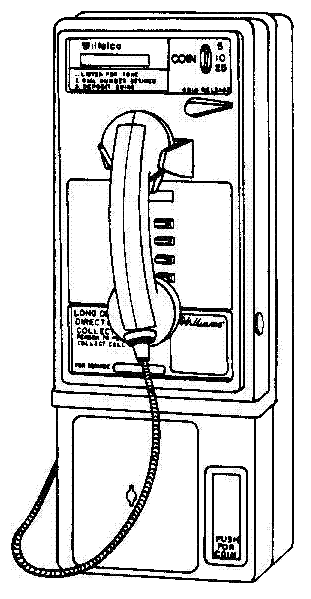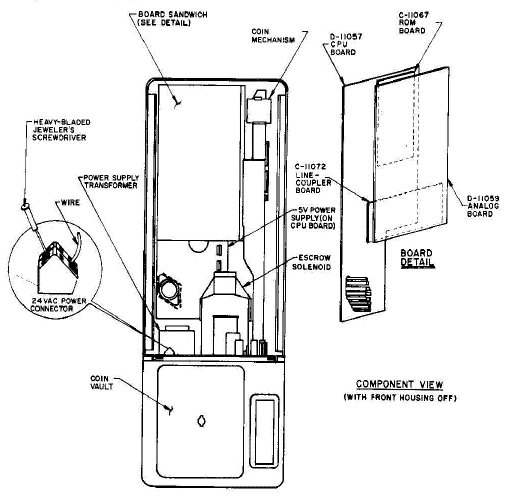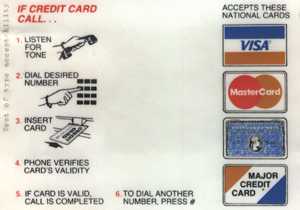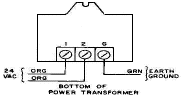Evolution of the Wiltelco Phone
SHRUNKEN PINBALL TABLE. I think of the phone as containing shrunken-down pinball electronics. To reduce the current draw, we used CMOS parts. The reduced load allowed a smaller power transformer. Another reduction took place when we eliminated flippers and most of the solenoids and lamps. The only phone solenoid that I can think of is the “escrow” solenoid. This solenoid holds back coins while software decides to return or keep coins.
THE PHONE DESIGN with two onboard computers follows our usual pinball machine design. In both cases, one computer operates analog features. The other computer operates digital features. The digital control computer is the master brain. At least, that's the way I remember the separation of tasks. In the 5000 phone, chip U1 is the master. The phone's U12 processor handles the analog signals. We called Chip U12 the “ASAP.” ASAP stands for answer supervision analog processor. This phone part is roughly equivalent to the pinball machine sound and speech boards.
|
|
|
VF DISPLAY. The phone's vacuum fluorescent (VF) display is much more capable than the pinball gas discharge displays of the time. The VF is a dot-matrix display that a user can program down to the pixel level. A primitive sort of animation is even possible. For instance, silhouette cars rolling across the display. Williams' pinballs didn't surpass the phone's level of graphic sophistication until we introduced pinball “Dotmation”. Dotmation showed up some five years after the phone's demise.
5000 VS. 6000. The company had planned to introduce the 6000 phone in fall, 1987. The Model 6000 was a complete, top-to-bottom reconceptualization of the phone. Both the hardware and software differed from those in the Model 5000. The main differences occurred on Scott Herschler's CPU Board. While the 5000 had 100 programmable features, the 6000 had twice that many. The 6000 was a much better product than the 5000 was. Some of the difference was hardware efficiency. The 6000 hardware only used one Motorola 68B09 processor, vs. two for the Model 5000. Yet the 6000 software was far more sophisticated than was 5000 software. As a result, the manual was 200 pages long instead of the 5000 manual's 100 pages.
More model differences. While the 5000 has a male voice, the 6000 sounds like a female. To my way of thinking, that's a crucial advance. Unlike the 5000, the 6000 includes a credit card swipe reader and validator. A fun feature of the 6000 was the enhanced “advertising” software. The new version expanded the number of packaged animation modes for the VF display. One could design an animated sequence and upload it to the phone from a PC. Customers could even store sequences on diskette and trade them. Once I heard a rumor about various humorous or ribald animations circulating among our customers. Many things are possible. To this day, I wonder about that story!
Restoration
OBSOLETE PARTS. You'll have trouble with custom parts that are obsolete. Among these are the date and rate chips. I explain in more detail below.
Wiltelco Hardware & Software In Brief...
- ASAP. The ASAP chip is microprocessor U12. This proc controls the phone's answering capabibility. To write the original phone program, Wiltelco borrowed none less than the distinguished Bill Pfutzenreuter from the games division. Bill had previously programmed such games as Joust, Inferno, Bubbles, and (with others) Sinistar. Dave Schmidt and Terry Schulenburg composed later software, including the entire Model 6000 project.
- BATTERY. Inside the phone is a lithium battery. You'll find this cell in a round clip inside the phone. The battery serves to back up the CMOS memory chip. The battery would probably be a little past its prime by now. Read: “Stone dead.” The removal or failure of both battery and external power erases the phone's CMOS memory. Fortunately the CMOS chip doesn't contain all of the user-programmed features. Other parts of the user program reside safely in non-volatile EEPROM. If the battery works, don't expect it to last for long. I think that its normal lifespan is about six years. That would mean that most batteries failed by 1991. When you remove the battery, note the polarity. One side of the battery has a “+” sign on it. Inserting the battery the wrong way can cause an explosion.
- CALLBACKS. As phone operator, you can program the phone to call a private phone and report status. For example, you might want the phone to call the office when the cashbox is full. That is, a “callback” is when the phone calls you. In programming the phone, you enable callbacks for various conditions. You can set up callbacks at the phone, or though a call to the phone. A third method involves programming from a PC with an analog modem. PC programming requires a DOS PC, the Wiltelco phone software, and a modem of the period. Sorry, but Wiltelco phones don't offer Internet access.
|
- CASE & OTHER PARTS. Of course, the electronics are all Wiltelco. Yet many parts are standard,
such as the General Telephone (
not AT&T) case. We modified this case by adding the display, removing the electromechanics and modifying various parts such as the keypad. Adding the display isn't an easy job. As part of the defunct Wiltelco Kit project, I cut the hole for the display myself, with hand tools. Sawing through that 14-gauge steel with a hacksaw took eight hours! As a result of my experience, the company never released the kit. (I don't know what happened to my kit assembly manual. If anyone has a copy, it would be very rare today!) From Williams, you could also buy stanchions and gorilla handsets. GTE (now part of Verizon) molded the gorilla handsets from Lexan®, the bullet-proof plastic. These handsets are noticeably heavy. Their walls are many times the normal thickness. The cord has a flexible metal shield. Inside is a steel lanyard with anchors in the phone and in the handset. This handset is difficult to steal! In many locations, such handsets would be a good idea. They're very sturdy and can take a lot of abuse. On the other hand, angry customers could use a gorilla handset to smash the display, conk heads, or hammer nails. Well, those were the days. - COCOT. Wiltelco designed its phones for COCOT lines, not regular lines. (Some states call these pay phone lines COPT lines.) I don't remember ever trying these phones on regular lines. The experiment would be worthwhile, but at minimum, some features wouldn't work.
- COMPUTER SYSTEM. The smart phone's onboard computer system replaces all the central office features, including the operator. The phone can also compensate (to some degree) for varying line conditions. Inside the phone is a basic DSP. One microprocessor controls an intelligent equalizer (a few op amps under program control).
- DATE CHIP. The date chip inside the phone contains about five or ten years of hard-coded dates. The company bought these chips in about 1985. By now, the chip would be obsolete. I don't know where someone could find a replacement. You might consider leaving the date chip as is. I recommend a Google search for a perpetual calendar site. With that site, you might find a calendar between 1985 and 1990 that matches the current year. You could then set the date to the year with the matching calendar. Calendars repeat every 14 years. That's why the Chinese only have 14 animals for “Year of the (XYZ animal).” For example, the same calendar works for 1979, 1993 and 2007.
- KEYS. To access the phone, you need keys. As I recall, a security key allows you to access and change passwords. This is the key on the right side of the cabinet. A different key allows you to make a collection. With the security lock unlocked, the phone speaks and displays functions and values. (I assume that the phone still operates. Vandals damaged many of our phones. In San Francisco, someone actually blew up one phone. The explosion destroyed a couple of cars, too. Crooks, vandals and irate callers are the reason for our use of “gorilla” handsets. I don't know if gorilla handsets are demolition-proof.)
- KEY SOURCE. You might find keys at phone suppliers. Bellcore (now Telcordia, a part of SAIC or Science Applications International Corp.) once provided the specs for such parts. I don't know how to find the exact security key. Maybe there's a number on the lock barrel. Otherwise, I suppose that you must carefully drill out the lock. Doing that isn't as hard as it sounds. Be careful not to damage the lever behind the lock barrel. That lever actuates a security switch.
- MICROPROCESSORS. The 5000 contains two CMOS microprocessors, U1 and U12. They're Motorola 68B09s. In the model 6000, we eliminated one of these procs. The 6000 included a lot more memory. The two-processor version offers a slight troubleshooting advantage: If one proc fails, only half the system is down. Result: Instead of finding a complete blackout, you notice a distinctive cyber-symptom. Here's an example of “left brain-right brain” troubleshooting in Model 5000: If U1 fails, the system can't display data. You get horizontal lines across the display. If U12 fails, the system can't process incoming data. You see the message “ASAP TAKE ERROR!” You'd also get a callback for the second error. Both procs are on the phone's CPU board. (The boards are in a sandwich, so separating one from the other is difficult.)
- PASSWORD. The factory password setting is 111-111. Since the memory backup battery is likely defunct, the phone will have forgotten the owner's password. I recommend trying the factory password.
- PC SOFTWARE. Williams also sold route-wide programming software. With this DOS software, you could reprogram all phones on your route overnight. What a timesaver! For the software product, I wrote a separate manual. My old pinball associate Butch Ortega provided the illustrations. Wiltelco sold a modem, manual and software package. For large routes, this DOS package is definitely the way to go. I still remember Terry Schulenburg's clever menu system. This DOS shell was way ahead of its time.
- RATE CHIP. The rate chip is obsolete. This is ROM board EPROM U3. The rate chip is a proprietary part. Williams Telephone hasn't released an update since the fall of 1987, when the company dissolved. A man with the name Grabowski was going to purchase the company, but the deal fell through. That event occurred in about December, 1987. Afterward, as far as I know, Williams destroyed all Wiltelco intellectual property. On the other hand, maybe the default rates are okay for private use. Fortunately, one can manually change rates, use standard rates or allow free calling. I don't remember the default setting.
|
- SERVICE NUMBERS are how you access phone features. With the diagnostic service number 04, you can test most of the phone hardware and firmware. Service Number 5 is the “advertising” (display) number. This service number allows you to program the VF display. The first page of this Wiltelco Web site includes a table of service numbers and their functions.
- VOICE. One of my favorite phone improvements is a female cybernetic operator voice. To do the Model 6000 announcements, we even hired professional talent. In contrast, the Model 5000 has a male voice. The original, male voice is that of an engineering manager, John McCaffer. McCaffer's voice is clear, authoritative and emphatic. He has excellent enunciation. If McCaffer weren't already a successful engineering services manager, he'd have had a career in announcing. Yet the 6000 phone's melodious, soothing feminine voice instantly melted hearts and won customers. Sorry, John.
- WEIGHT. Either model of the Wiltelco phone weighs about 60 pounds. That's the phone by itself and without the transformer, stanchion or anything else. I remember the weight because of a couple of trips through the pinball factory with a phone on shoulder. The pinball factory was about half a block across. The technicians and I shared an office at the back of the plant. Engineering and Sales were in the front of the plant. At the end of the walk, I'd scale a steep stairway to Sales. Engineering was another half flight up.
Fascinating Loose Ends
WILD. Wiltelco was a wildly ingenious outfit. Every day was "Anything can Happen Day." Even as the company shut down, other Wiltelco ideas were puffing up the pipe ...
- KIT. In our last few months, we conceived and then canceled a Wiltelco 5000 conversion kit for competitive phones.
- PLASTIC MODEL. Pete Ori designed a plastic phone for low-security locations. At one point, he was sending out a full-size mockup for quotes. The molds would have cost too much though, and our management aborted the plastic product. I wonder what happened to the mockup? As a one-of-a-kind piece, it would be very collectible!
- AT&T CABINET. Several times, management discussed a phone that would fit into to an AT&T cabinet. I managed to shoehorn our PC boards into an AT&T case, but failed to impress Engineering. We never switched to the more popular cabinet.
- VIDEO STUDIO. I scripted and announced a sales video for the 1986 AMOA Show. Francis Galluccio wrote and performed the score. I hired videomaker Rick Dietz to produce our show. He brought in a very talented production crew. For Williams' sales dinner downtown, I hired first-rate team from Production Associates. (Thanks for the magic, Dennis Hutchins at PA!) There at Chicago's Swiss Grand Hotel, we projected our video on a large screen. Back at the office, John Huddleston assigned me to script educational videos. He actually had more in mind than scripts. Before I knew what I was into, he had me designing and building a video studio. I had to persuade Ken Fedesna, the GM of our games division, to let me add video to an existing audio studio. Despite various setbacks, broken equipment, and budget cuts, the studio actually came to be. We even had a tiny control room across from the audio control room. John left the company, but Alan Van Campen was present for our first video shoot. Fred Stonum was the on-air talent. His topic was the technology behind the Model 5000 phone. Due to equipment problems, any error caused us to start over! After a few missteps, we plunged onward. I directed the little show. Deon Smith was assistant director. Rudy Fernandez and Earl Koeller were our cameramen. Ray Kielminski was our floor director. As the company changed radically over the following months, we realized that this was our only production. Somewhere in a file cabinet, one might still find a U-Matic tape of this historic event.
- RARE DISPLAYS. Also at the '86 AMOA show, I debuted my animated, “bouncing coin” fiber optic displays. These arrived the night before the show from Marla Scheckman at Fritkin Jones. (Update: Now she's a major player at The Design Agency). With help from the union guys, we installed the gorgeous displays atop two phone stanchions. If you find these displays today, you might have struck gold.
- DIRECT SALES. In the summer of 1987, I proposed a direct-sales program to Tom Parks and Alan Van Campen. Van Campen approved the plan on the provision that it would keep a low profile. He wanted to get the jump on the competition. Parks and I proceeded. He provided the mailing lists and followed up on leads. I composed and printed the sales letter. Then a secretary and I prepared each day's mailing. Our mailing program wasn't a true direct-sales program. The return card only qualified a sales lead. Either Tom, Inside Sales or a distributor would close the deal. That way, we didn't upset our distributor system and we could keep our prices confidential. As far as I know, few people outside the office door knew about the direct sales program. The plan sold $20,000 worth of phones in just a few weeks. Then came the big layoff meeting.
- OAK BROOK MOVE. For almost two years, Wiltelco Engineering bivouacked in the old company cafeteria. Service camped out a block away in the pinball parts department. In 1987, our president Rich Wilkus began planning a move to better quarters. They'd be on Enterprise Drive, off Cermak Road in Oak Brook. Alan Van Campen, our boss and VP of sales at the time, showed me the office plans. The plans were exquisitely detailed, right down to anti-static floors in the field technicians' offices. I could see where the techs would sit. At the time, our techs were Bill “Duke” Hansen and Rudy Fernandez. Fred Stonum managed the department. (Ray Kielminski had moved to Software Engineering and Earl Koeller to Inside Sales.)Probably the move would have taken place in 1988. Yet by 1988, the company was gone from Oak Brook, Chicago, and everyplace else.
Talk to Me!
JUST DON'T CALL ON A PAYPHONE. Did you work for Wiltelco? Know me? Never heard of me? Drop me a line! Tell me your favorite Wiltelco story. (Please keep it clean, and keep it brief. That is, don't send dirty briefs.) I regret that I can't publish everything. But I'll mention you here if I can. Contact data for the Games & Gaming Archive appears at the bottom of this page.
Go to Page: 1 2 Back

Line drawing of 5000 phone by the late Jim Ross
WILTELCO P. 2 CONTENTS
- Evolution of Phone
- Line art, 5000 phone
- 5000 vs. 6000 phone
- Internal view
- Restoration
- Hardware & Software
- Color Label
- Power Transformer (art)
- Fascinating Loose Ends
- Talk to Me!


